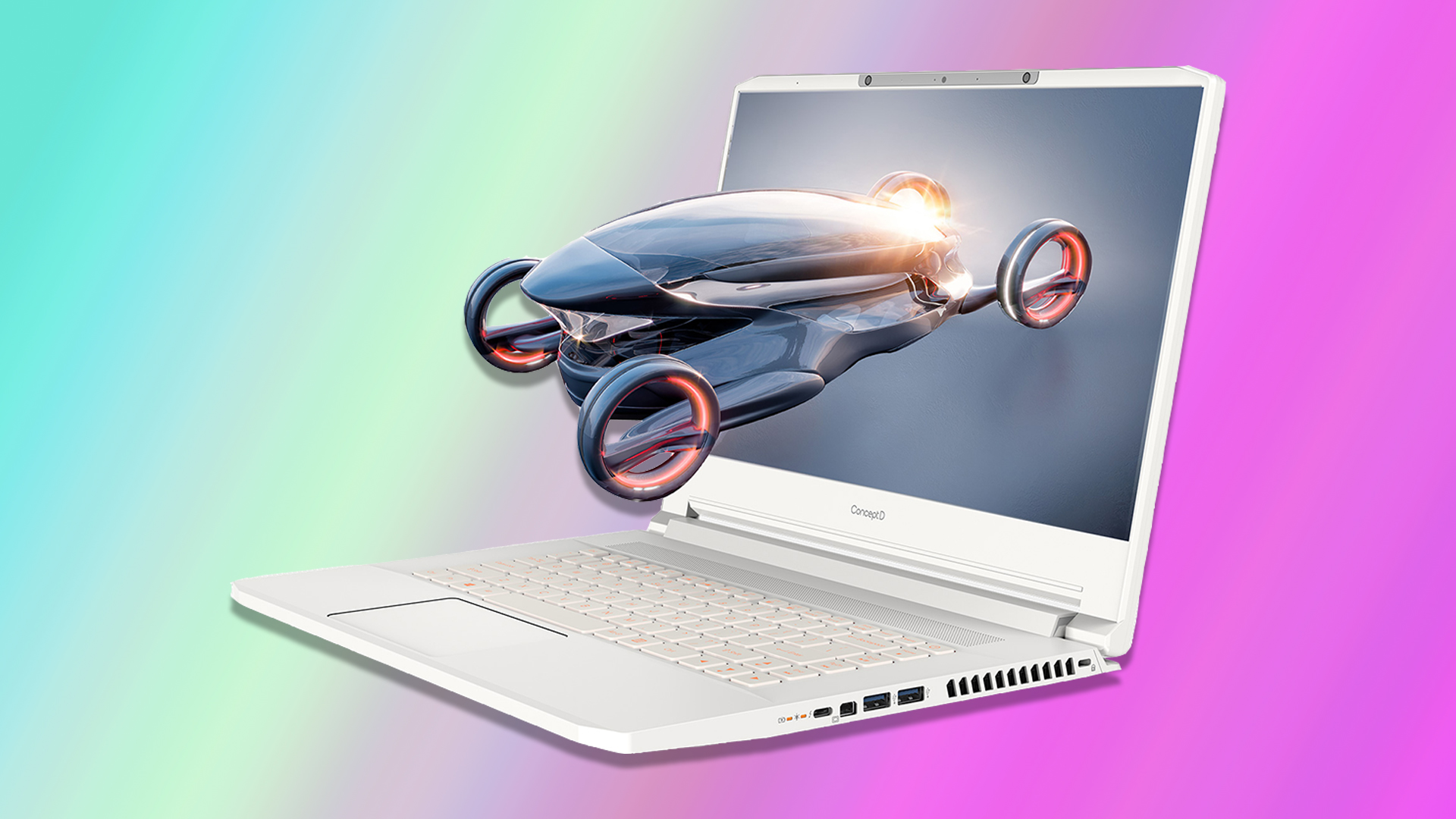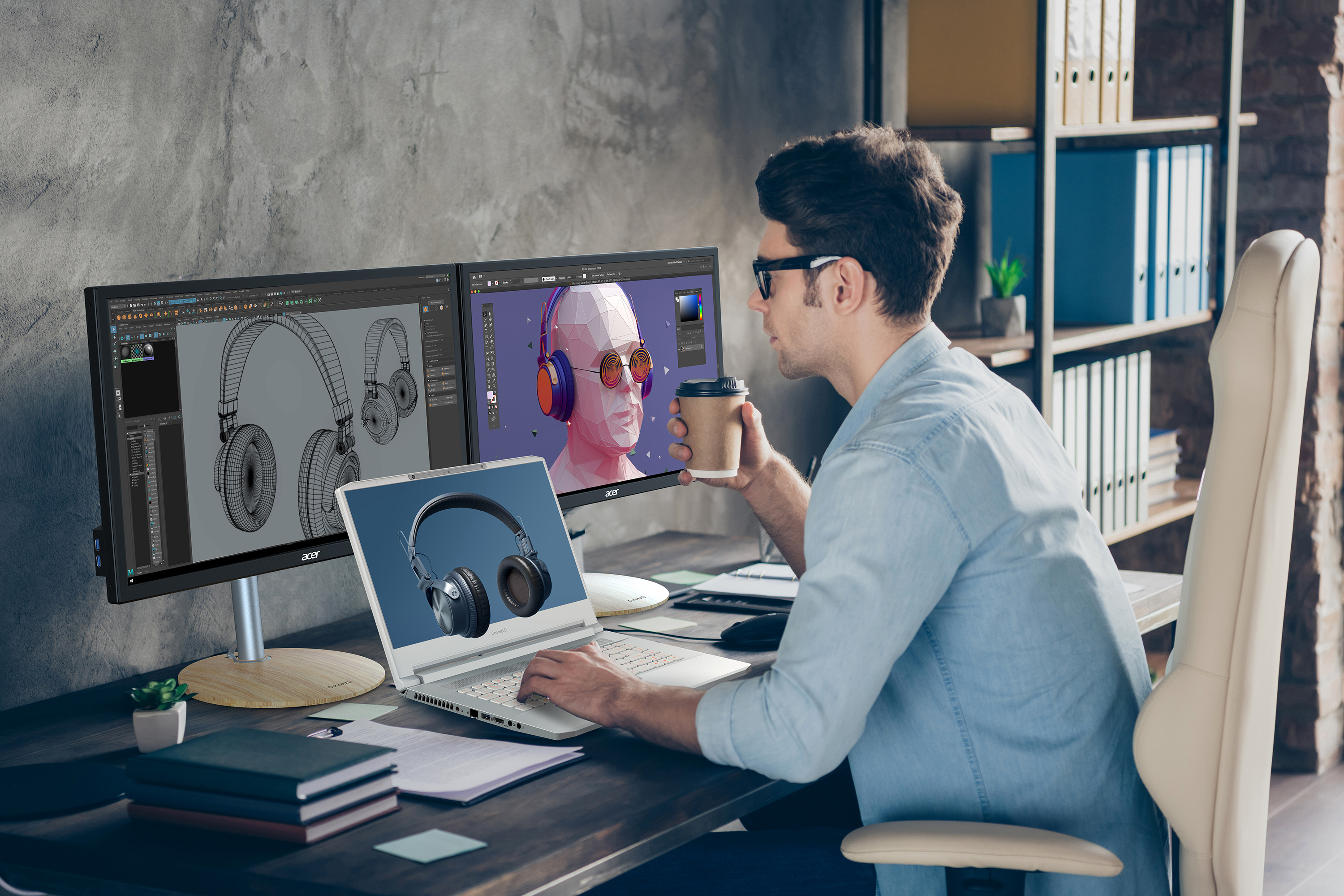Acer unveils bizarre ConceptD prototype with SpatialLabs stereoscopic 3D display: Does the world need a 3D laptop?
Acer is bringing stereoscopic 3D back, but do we even want it?

Acer announced today a big move into 3D technology called SpatialLabs — spearheaded by a ConceptD prototype notebook with a stereoscopic 3D display and real-time eye-tracking.
The company has announced new gaming laptops and Chromebooks. But this is certainly one of the most surprising, and a big shift in Acer’s focus to take prosumer work into the third dimension.
Acer ConceptD stereoscopic 3D notebook: How it works

Acer’s ConceptD notebook uses an eye-tracking stereo camera to track the position of your head and eyes. This allows the laptop to render 3D visuals in real-time and makes it appear as if images are floating off the screen.
But fear not. This isn’t an always-on situation, as the notebook is set to 2D as default on its UHD panel, with the option to activate its liquid crystal lenticular lens on the top bezel and switch to stereoscopic 3D views.
To make it all work, the GPU displays a different image to each of the viewer’s eyes and creates a 3D image that floats in front of the screen, which can be moved and edited in real-time. You can imagine this being a big step forward for project work, like architecture, that relies on three dimensions.
So far, these features are being utilized in the SpatialLabs Experience Center — consisting of a model viewer, a proprietary app to render side-by-side full-screen content in stereoscopic 3D, a middleware PiStage app that gives users the opportunity to create content on an extended 2D monitor setup and view them in 3D, and a native 3D video player.
Of course, with this being a prototype, nothing has been said about the hardware powering this 3D tech or any potential 3D laptop pricing, but there is one question that has followed stuff like this in the past.
Sign up to receive The Snapshot, a free special dispatch from Laptop Mag, in your inbox.
Do you even want a stereoscopic 3D laptop?

Let’s be honest, 3D has a sketchy past in consumer tech. It’s easy for tech journalists to excitedly write about, but anything in this field can quickly fall into gimmick territory.
Whether it’s 3D smartphones with abysmal battery life or TVs requiring you to wear spectacles, to say these attempts were all a “flash in the pan” would be an understatement.
Laptops didn’t escape this trend, as the likes of 2011’s Sony Vaio F215FX and Dell XPS 17 3D can attest to. The former coated the screen with the material needed for stereoscopic 3D, whereas the latter gave you a silly pair of glasses.
Luckily, the technology has moved on since then, but to elevate this beyond a schtick sales point for Acer to wheel out, the company needs to cultivate strong developer support and provide enough of a reason to use it.
Beyond the applications in the Experience Center, SpatialLabs also supports Unreal Engine with a developer program that allows applicants to use one of these prototype units for three months.
So, all the pieces are in place, but it all comes down to you. Would you want to buy a stereoscopic 3D laptop? Tell us on Twitter!

Jason brought a decade of tech and gaming journalism experience to his role as a writer at Laptop Mag, and he is now the Managing Editor of Computing at Tom's Guide. He takes a particular interest in writing articles and creating videos about laptops, headphones and games. He has previously written for Kotaku, Stuff and BBC Science Focus. In his spare time, you'll find Jason looking for good dogs to pet or thinking about eating pizza if he isn't already.
